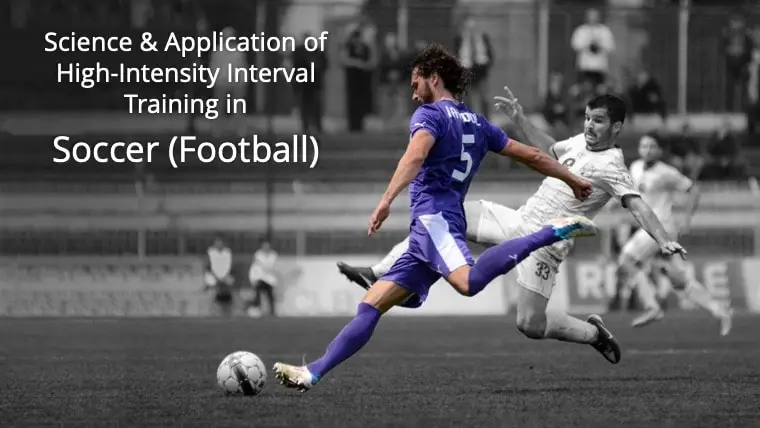Introduction: The Revolutionary Training Approach That’s Transforming Team Sports
HIIT vs Zone 2 training for team sports represents the most significant conditioning debate in modern athletics. While traditional endurance training advocates spend countless hours in moderate-intensity zones, cutting-edge research reveals that high-intensity interval training delivers superior results in a fraction of the time.
This comprehensive analysis examines why HIIT vs Zone 2 training for team sports isn’t even a fair comparison anymore. The science is clear: high-intensity interval training provides better adaptations, improved exercise capacity and health outcomes, and superior time efficiency for team sport athletes.
Understanding the Science Behind HIIT vs Zone 2 Training for Team Sports
The Physiological Foundation
When comparing HIIT vs Zone 2 training for team sports, we must first understand the fundamental differences in physiological adaptations. High-intensity interval training targets Type 2A muscle fibers, which are crucial for team sport performance.
Type 2A fibers offer unique advantages:
- Enhanced anaerobic power for explosive movements
- Improved aerobic capacity for sustained performance
- Faster contraction speeds for agility and speed
According to the latest research by Storoschuk et al., (2025), the largest training-induced increases in oxidative capacity occur in Type 2A fibers through HIIT protocols. These adaptations can match those seen in Type 1 fibers while maintaining the power characteristics essential for team sports.
Zone 2 Training Benefits and Limitations
While zone 2 training benefits include improved fat oxidation and aerobic base development, these advantages come with significant limitations for team sport athletes. Zone 2 training primarily targets Type 1 muscle fibers, which prioritize endurance at the expense of power and speed. However, when examining HIIT vs Zone 2 training for team sports, the evidence consistently favors high-intensity approaches.
The Landmark Research: Why HIIT Dominates Zone 2 Training
The Gibala Study: 15 Minutes vs 10+ Hours
The groundbreaking 2006 Gibala study revolutionized our understanding of training efficiency in the HIIT vs Zone 2 training debate. This research compared:
HIIT Protocol:
- 30-second all-out efforts
- 4-6 intervals per session
- 4-minute recovery periods
- Total work time: 15 minutes over 3 weeks
Zone 2 Protocol:
- 90-120 minutes at 65% maximal aerobic power
- Total time commitment: 10+ hours over 3 weeks
The shocking results showed identical adaptations in both groups for time trial performance, muscle-level oxidative capacity, and overall aerobic improvements. The interval training hiit group achieved the same results in 5 times less training volume.
Central vs Peripheral Adaptations: The HIIT Advantage
Cardiovascular Improvements
When examining HIIT vs Zone 2 training for team sports, central adaptations represent the most significant difference. High-intensity interval training consistently produces:
- VO2max improvements of 5%+
- Stroke volume increases of 10%+
- Enhanced cardiac output capacity
- Improved oxygen delivery to working muscles
These central adaptations transfer directly to improved exercise capacity and health outcomes across all sporting activities.
The Transfer Problem in Team Sports
The transfer of training adaptations depends heavily on training intensity and duration. In the HIIT vs Zone 2 training comparison:
On-Field Training Transfer:
- HIIT: Both central and peripheral adaptations transfer effectively
- Zone 2: Limited transfer due to minimal central adaptations
Off-Field Training Transfer:
- HIIT: Strong central adaptations benefit all activities
- Zone 2: Poor transfer to team sport demands
This transfer superiority makes HIIT the clear winner in HIIT vs Zone 2 training for team sports applications.
Practical Applications: Programming HIIT for Team Sports
The Training Zone Builder Approach
Creating an effective training zone builder for team sports requires understanding the specific demands of each sport. When implementing HIIT vs Zone 2 training for team sports, consider:
Weekly Microcycle Strategy:
- Day -3: Primary conditioning day
- Format selection based on concurrent training demands
- Neuromuscular load management through work:rest manipulation
HIIT Format Selection
The decision between various high-intensity interval training formats should be based on:
- Neuromuscular demands of surrounding training
- Recovery requirements for subsequent sessions
- Sport-specific needs and athlete preferences
- Time constraints and practical considerations
Research shows that small-sided games provide slight advantages due to sport-specificity and athlete enjoyment while maintaining the physiological benefits of traditional HIIT formats.
Zone 2 Training: Limited Applications for Team Sports
When Zone 2 Has Value
While HIIT clearly wins the HIIT vs Zone 2 training for team sports debate, Zone 2 training does have limited applications:
Appropriate Uses:
- Active recovery sessions
- Parasympathetic nervous system enhancement
- Very high-volume training phases (impractical for most team sports)
Zone 2 Training How to Implement (Sparingly)
For coaches wondering zone 2 training how to implement effectively:
- Use only for recovery purposes
- Limit to 60 minutes maximum
- Focus on parasympathetic activation
- Never replace primary conditioning work
The research consistently shows that in HIIT vs Zone 2 training for team sports, Zone 2 should play a minimal, supportive role rather than being the primary conditioning method.
Managing HIIT’s Challenges: The Autonomic Nervous System
The Sympathetic Challenge
While HIIT dominates the HIIT vs Zone 2 training for team sports comparison, it does present one notable challenge: increased sympathetic nervous system activity. However, this is manageable through:
Recovery Strategies:
- Cold water immersion protocols
- Quality sleep optimization
- Massage therapy
- Parasympathetic reactivation techniques
The benefits of high-intensity interval training far outweigh this manageable downside when proper recovery protocols are implemented.
Implementation Timeline: From Science to Practice
Week 1-2: Foundation Phase
Begin transitioning from Zone 2 to HIIT protocols:
- Introduce 2x per week HIIT sessions
- Use longer intervals (4-6 minutes)
- Monitor neuromuscular fatigue responses
Week 3-4: Intensification Phase
Increase HIIT frequency and adjust formats:
- Progress to 3x per week sessions
- Incorporate sport-specific movements
- Reduce Zone 2 volume by 70%
Week 5+: Optimization Phase
Fine-tune protocols based on individual responses:
- Customize work:rest ratios
- Integrate small-sided games
- Eliminate unnecessary Zone 2 training
Conclusion: The Science Speaks Clearly on HIIT vs Zone 2 Training for Team Sports
The evidence overwhelmingly supports high-intensity interval training over Zone 2 training for team sports applications. When examining HIIT vs Zone 2 training for team sports, the advantages of HIIT include:
HIIT Advantages:
- Superior time efficiency (5x less volume for same results)
- Strong central and peripheral adaptations
- Better transfer to sport performance
- Sport-specific integration possibilities
- Consistent, reliable results
Zone 2 Limitations:
- Massive time requirements for meaningful adaptation
- Minimal central adaptations in practical durations
- Poor transfer to team sport demands
- Cannot integrate sport-specific skills
For team sport athletes, HIIT vs Zone 2 training isn’t just a matter of preference—it’s the only practical choice for serious performance improvement.
Take Action: Implementing HIIT vs Zone 2 Training for Team Sports
Ready to revolutionize your training approach? The research on HIIT vs Zone 2 training for team sports shows that making this switch could be the difference between mediocrity and elite performance.
Next Steps:
- Audit your current conditioning program
- Implement HIIT protocols 2-3x per week
- Choose formats based on concurrent training demands
- Monitor neuromuscular fatigue and adjust accordingly
- Use Zone 2 sparingly for recovery purposes only
The science is clear: when it comes to HIIT vs Zone 2 training for team sports, high-intensity interval training is the undisputed champion.
Metabolic Conditioning for Team Sports
Unlock Your Team’s Potential with Martin Buchheit’s Science-Proven Metabolic Conditioning Methods






